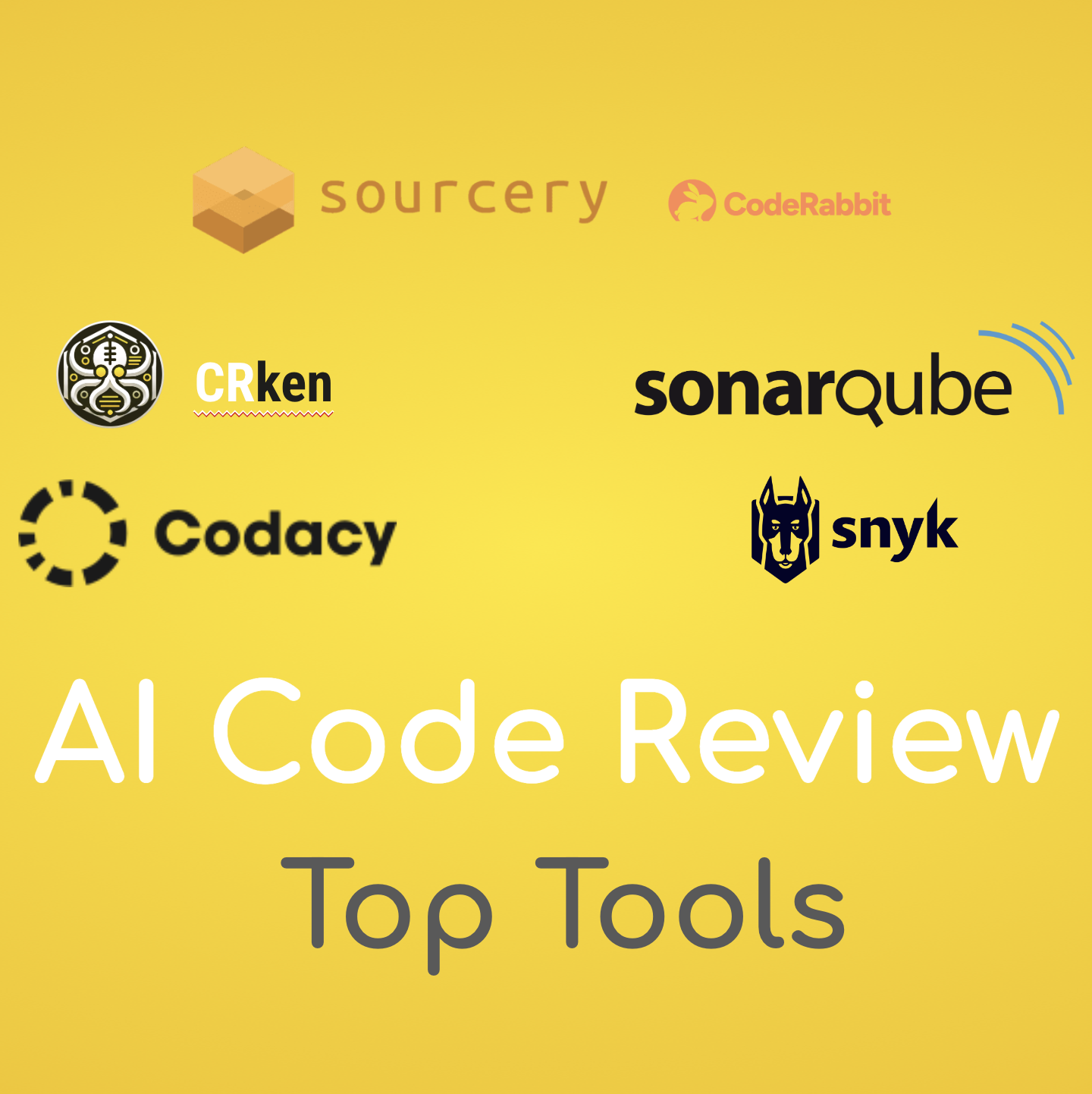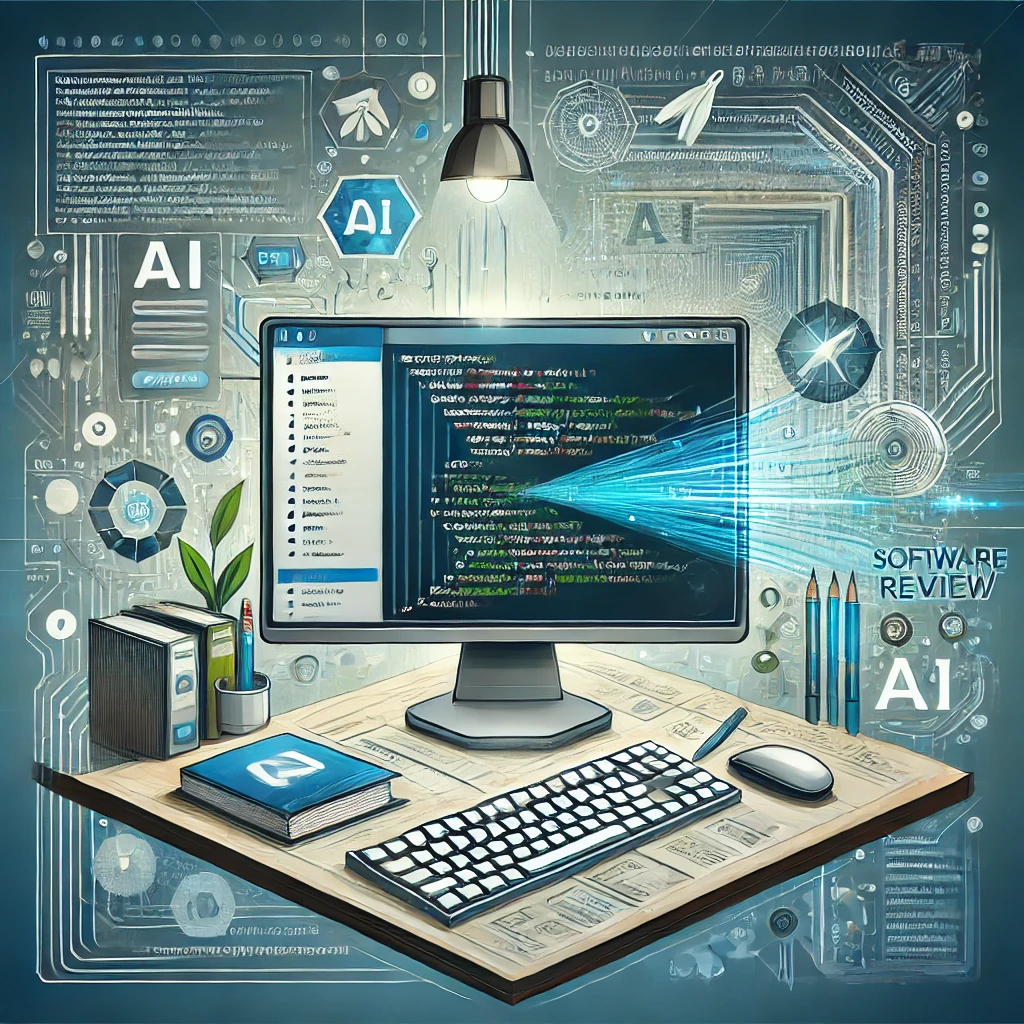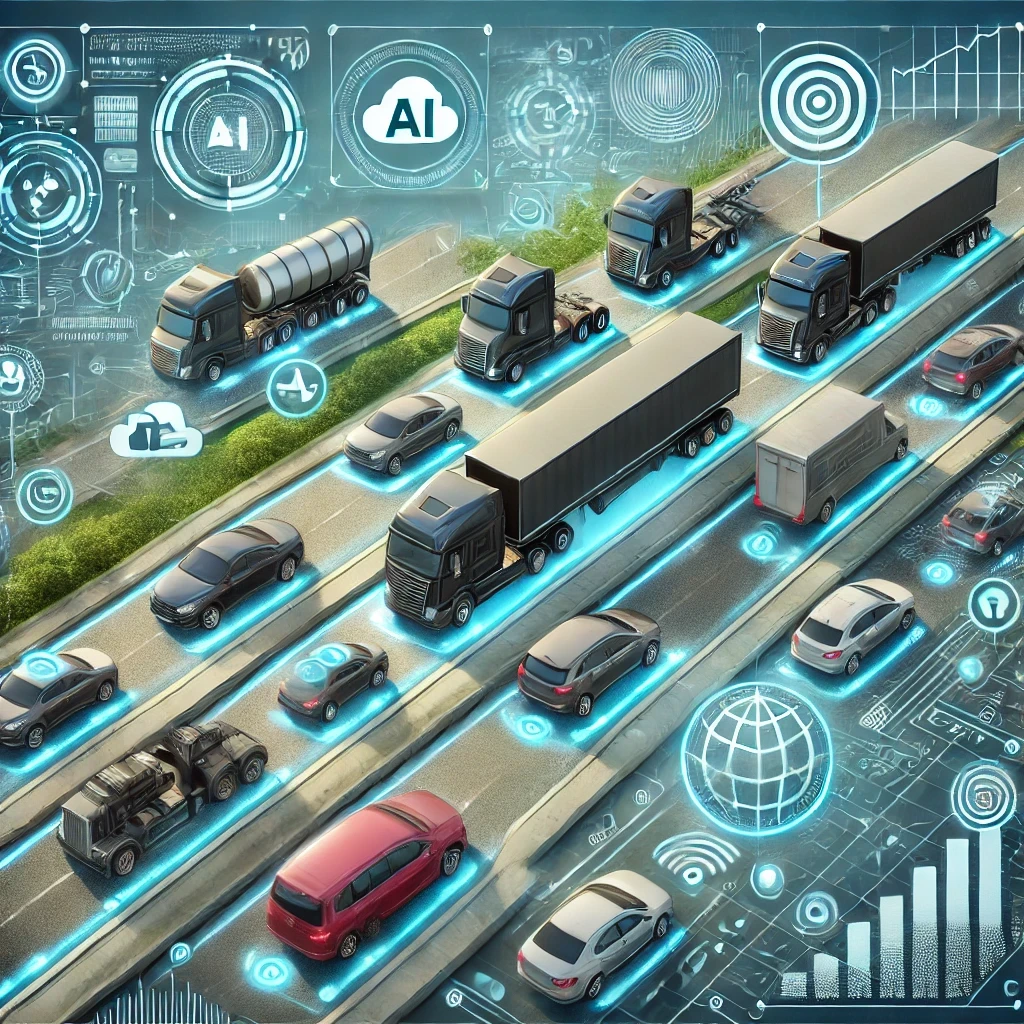
Top AI Tools for Code Review
AI-powered code review tools are revolutionizing the way development teams ensure code quality, improving efficiency, consistency, and collaboration. These tools leverage machine learning and large language models (LLMs) to automate code analysis, catch bugs, and provide context-aware suggestions that boost productivity. In this blog post, we explore the top AI tools for code review, compare their features, and discuss how they can transform your development workflow. Whether you’re looking to enhance code quality or streamline the review process, choosing the right AI tool can significantly elevate your software development efforts.

Improving Compliance with AI-Powered OCR in Financial Services
In today’s fast-paced financial landscape, regulatory compliance is more challenging than ever. AI-powered OCR offers a game-changing solution, automating the extraction and verification of data from financial documents, enabling institutions to streamline their compliance processes. By reducing manual labor, minimizing errors, and ensuring real-time monitoring, AI-driven solutions help financial institutions meet regulatory demands efficiently and accurately. As compliance requirements evolve, embracing AI compliance solutions can help financial institutions stay ahead, reduce costs, and boost operational efficiency, ensuring long-term success.

How AI Code Review Tools Improve Software Quality
In the ever-evolving world of software development, maintaining high software quality is a growing challenge. AI-powered code review tools offer a game-changing solution by automating routine checks, detecting bugs and reducing technical debt. These tools enhance the efficiency of development teams, allowing developers to focus on complex problems while ensuring that coding standards are consistently applied. From improving productivity to accelerating time-to-market, AI-powered code reviews are becoming a strategic asset for developers, tech leads and CTOs who are looking to deliver better software faster.

AI-Powered Alcohol Label Recognition for Streamlining Inventory in Bars and Restaurants
AI-powered alcohol label recognition is revolutionizing inventory management in bars and restaurants by automating the tracking of alcohol stock, reducing errors, and optimizing stock levels. With advanced technologies like OCR, object detection, and machine learning, these systems provide real-time inventory updates, streamline operations, and cut down on waste. As the hospitality industry continues to adopt AI solutions, businesses can expect to see greater efficiency, cost savings, and enhanced customer experiences, positioning AI as a crucial tool for the future of the food and beverage sector.

The Future of Face Analysis in Event Management and Access Control
As the events industry embraces AI-powered face analysis, the way we manage and secure large-scale gatherings is evolving. From streamlining guest check-ins to enhancing security and providing personalized experiences, face recognition technology is becoming a game-changer in event management. With AI's ability to automate access control and offer real-time insights, event planners can operate more efficiently while delivering seamless and engaging experiences for attendees. As this technology continues to advance, the future of events will be driven by AI, offering smarter, more secure, and personalized interactions for all.

How AI-Driven Object Detection Enhances Security in Retail Environments
AI-driven object detection is transforming retail security by providing enhanced surveillance accuracy, real-time threat detection, and proactive theft prevention. As retailers face evolving challenges such as shoplifting and organized crime, AI technology offers a powerful solution that integrates seamlessly with existing systems. With its ability to quickly identify suspicious behaviors and reduce manual monitoring, AI is essential for creating safer, more secure retail environments. As the future of retail security continues to evolve, adopting AI-driven solutions will be key to staying ahead of potential threats and optimizing store operations.

AI-Powered Background Removal in Photography: Transforming Post-Production Workflows
AI-powered background removal is revolutionizing photography post-production, offering faster, more precise, and scalable solutions for photographers, businesses, and creatives. In this blog post, we explore how AI tools are transforming traditional workflows by automating the tedious task of background removal, enabling professionals to focus more on creativity. From e-commerce to portrait photography and marketing campaigns, discover the impact of AI-powered image processing and the future of AI in photography, including real-time background removal and integration with AR/VR technologies

The Role of AI in Content Moderation: Detecting NSFW Content with Image Processing
AI-powered image processing has become a crucial tool for content moderation, particularly in detecting NSFW content. By leveraging advanced techniques such as object detection, feature extraction, and pattern recognition, AI systems can automatically analyze and flag inappropriate content, ensuring platforms maintain safe and respectful environments. As the volume of user-generated content grows, AI enables faster, more accurate, and scalable moderation, reducing the need for extensive human oversight while improving the user experience. This post explores how AI is revolutionizing NSFW content detection across various industries.

AI-Powered OCR for Simplifying Paperwork in Healthcare Administration
AI-powered OCR is transforming healthcare administration by simplifying the management of medical paperwork. Through automation, this technology reduces manual data entry errors, enhances efficiency, and ensures secure handling of sensitive patient information. As healthcare providers adopt AI-OCR, they can streamline administrative tasks, reduce costs, and focus more on delivering quality patient care. Looking forward, AI technologies like OCR are set to play a critical role in shaping the future of healthcare, driving innovation in areas such as telemedicine, personalized treatments, and medical research.

How AI-Powered Image Recognition Improves Fleet Management in Transportation
AI-powered image recognition is revolutionizing fleet management by enhancing vehicle monitoring, improving driver safety, streamlining documentation, and optimizing route planning. Through automated visual inspections, real-time asset tracking, and predictive maintenance, fleet operators can reduce costs, increase efficiency, and improve sustainability. As the future of transportation evolves with innovations in AI, fleets will become smarter, safer, and more autonomous, positioning AI image recognition as a vital technology for managing modern logistics.

Aerospace Safety and Maintenance: The Role of AI-Powered Image Processing APIs
The aerospace industry is undergoing a transformation, with AI-powered image processing technologies revolutionizing safety and maintenance practices. By automating tasks such as defect detection, predictive maintenance, and structural health monitoring, AI is enhancing the accuracy and efficiency of inspections while reducing downtime and operational costs. As the industry adopts AI-driven solutions, the future of aerospace safety is becoming more proactive and data-driven, ensuring long-term durability, reliability, and compliance. Discover how AI-powered technologies are reshaping the aerospace sector, driving it towards a safer, more efficient future.

How AI Image Recognition APIs Are Transforming Fashion Retail and Online Shopping
AI image recognition is revolutionizing fashion retail, offering a range of benefits that enhance the shopping experience and streamline operations. From enabling visual search and personalized recommendations to automating product tagging and returns, AI-powered technologies are transforming how consumers interact with fashion online. As retailers increasingly adopt these innovations, they can deliver more personalized, inclusive, and efficient shopping experiences, driving customer satisfaction and sales. Explore how AI image recognition is shaping the future of fashion retail and opening new possibilities for both brands and consumers.

Why AI Visual Search Is Key to Personalization in E-Commerce
AI visual search is revolutionizing the e-commerce industry by providing a more intuitive and personalized shopping experience. Instead of relying on traditional keyword-based searches, customers can now upload images to find visually similar products in seconds. This shift not only enhances product discovery but also drives customer engagement and loyalty. As AI in e-commerce evolves with technologies like augmented reality and advanced computer vision, adopting visual search is essential for retailers looking to stay competitive and meet the growing demand for personalized shopping experiences.

Environmental Monitoring with AI: The Role of Image Processing APIs in Conservation
As environmental challenges like deforestation, climate change, and wildlife extinction continue to escalate, innovative solutions are essential to protect our planet. AI-powered image processing technologies are transforming conservation efforts by providing faster, more accurate tools for monitoring ecosystems, tracking wildlife, and detecting environmental changes in real-time. With advancements in AI in conservation, including drone technology and object detection, conservationists can now act more swiftly and effectively to safeguard biodiversity. Learn how these technologies are shaping the future of environmental monitoring and the protection of our natural world.

How AI Image Processing APIs Are Transforming Content Creation in the Entertainment Industry
AI-powered image processing is transforming the entertainment industry, streamlining content creation and enhancing creativity. From visual effects (VFX) and post-production workflows to personalized content and accessibility features, AI tools are helping creators produce high-quality media more efficiently. By automating repetitive tasks, AI empowers professionals to focus on innovation, delivering dynamic and engaging experiences to audiences. Embracing AI in content creation isn’t about replacing human creativity — it’s about augmenting it for a more productive and imaginative future in media production.

Enhancing Museum and Gallery Experiences with AI-Powered Image Recognition
As museums and galleries embrace cutting-edge technology, AI-powered image recognition is transforming how visitors engage with art and history. From personalized tours and interactive exhibits to enhanced security and art preservation, AI is revolutionizing the cultural experience. In this blog post, we explore the many ways AI in museums is shaping the future of the industry, offering innovative tools for curators and enriching the visitor experience like never before. Discover how AI-powered cultural experiences are making art and heritage more accessible, immersive, and interactive.

How AI-Powered Image Recognition APIs Are Transforming Education and e-Learning
AI-powered image recognition APIs are revolutionizing education by making learning more accessible, engaging, and efficient. These advanced tools automate tasks like grading, improve accessibility with OCR technology, and enhance student engagement through personalized learning experiences. From virtual classrooms to digital libraries, AI is transforming the way educational content is delivered and consumed. As educational institutions and e-learning platforms continue their digital transformation, integrating AI-powered tools will be key to creating more dynamic, interactive, and inclusive learning environments.

AI in Construction: The Role of Image Processing APIs in Monitoring Job Sites
Artificial Intelligence (AI) is revolutionizing the construction industry, with image processing APIs playing a pivotal role in improving job site monitoring. These AI-powered tools enhance safety, boost efficiency, and provide real-time progress tracking. From automating equipment tracking to detecting safety hazards, AI is reshaping how construction sites are managed. Explore how AI tools are driving smarter, safer, and more efficient construction processes for the future of the industry.
Streamline Logistics Operations with AI-Powered Image Recognition for Real-Time Tracking
In today's fast-paced global economy, the logistics industry faces mounting pressure to deliver goods swiftly and accurately. Traditional tracking methods, burdened by manual processes and delayed updates, can no longer meet the demands of modern supply chains, leading to increased costs and reduced customer satisfaction.
AI-powered image recognition offers a transformative solution. By automating data capture and providing real-time insights, it enhances accuracy, minimizes human error, and accelerates processes like sorting and inventory management. This technology empowers businesses to make dynamic decisions, optimize resources, and offer greater transparency to customers.
As AI continues to advance, integrating image recognition into logistics is becoming essential. Embracing this technology enables companies to overcome current challenges, improve efficiency, and elevate customer service. In an industry where speed and precision are crucial, AI stands as the key to future success.

How AI-Powered Image Processing APIs Improve Document Management in Legal Services
Struggling with overwhelming piles of legal documents? The legal industry is grappling with unprecedented volumes of paperwork, making efficient document management more critical than ever. AI-powered image processing APIs are emerging as game-changers, automating tedious tasks like data entry and filing, reducing human errors, and ensuring compliance with stringent regulatory standards. This technology not only enhances productivity but also transforms how legal professionals access and manage information. Dive into our comprehensive exploration of how integrating AI into your legal workflows can revolutionize your practice, offering significant cost savings and a competitive edge in today's fast-paced digital landscape.
